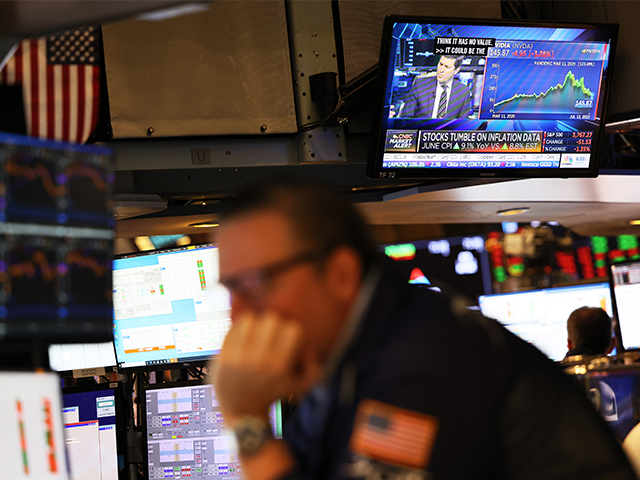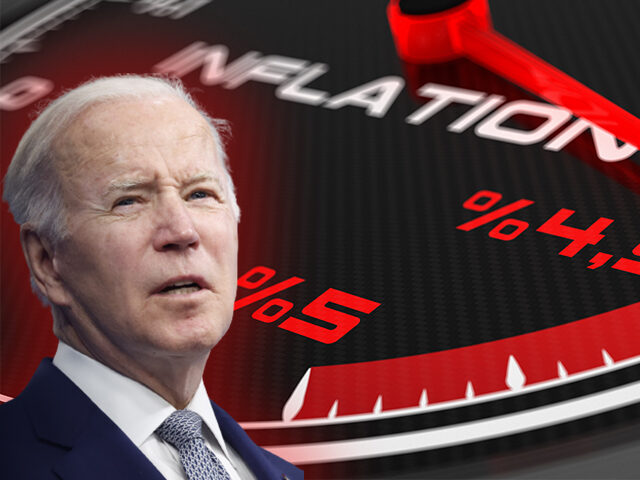There was no good news in the inflation report.
Headline inflation jumped 9.1 percent, the most in 41 years and above the 8.8 percent expected. On a monthly basis, the Consumer Price Index (CPI) was up 1.3 percent, a considerable jump from one percent last month, beating expectations for a 1.1 percent increase.
The core inflation figures are arguably more important from the perspective of where inflation is headed and what the monetary policy response from the Federal Reserve is likely to be. Core prices rose by 0.7 percent over the month and 5.9 percent on a 12-month basis. Both were higher than expected.
Many analysts had expected to see some moderation in categories like household furnishings, appliances, apparel, and food. Some of that was expected to be due to the “gasoline tax” demand destruction, as high gas prices stole sales from other categories. And some of it was expected to be due to the easing of supply chain constraints and the clearing of port congestion. Finally, there was some expectation that inventory clearing by major retailers held back prices.
Instead, the increase in core inflation was broad-based, suggesting inflation is becoming deeply entrenched. Furniture prices rose 1.1 percent for the month and are up 13.1 percent annually. Appliances climbed 0.2 percent, ending the two-month streak of easing prices, to end 6.5 percent above last year’s level. Food prices increased one percent, with grocery prices up 12.2 percent compared with last year.
Back in 1928, Democrats derided President Herbert Hoover’s policies as promising “a chicken in every pot and a car in every backyard.” Let’s take a look at how those prices fared in June. Used car prices are somehow still rising, now up 7.1 percent from a year ago after rising another 1.6 percent in June. New car prices are up 12.5 percent from a year ago and 0.5 percent from May. Chicken prices jumped 1.7 percent in June and are up 18.6 percent for the year. Even the pot costs more: non-electric cookware prices are up 1.2 percent in June and 9.6 percent from a year ago.
President Joe Biden tried to put a positive spin on this. “Importantly, today’s report shows that what economists call annual ‘core inflation’ came down for the third month in a row, and is the first month since last year where the annual ‘core’ inflation rate is below six percent,” Biden said in a statement from the White House Wednesday.
If only this were the good news Biden thinks it is. Year-over-year inflation measures are simply the cumulative sum of the monthly numbers. When inflation has been high in the past, it flatters the current number, what economists refer to as a base effect. So all the decline in annual core inflation tells us is that inflation in June of this year is slightly lower than inflation in June of last year.
Jason Furman, the Obama administration advisor turned Harvard professor, pointed out on Twitter that this was not necessarily goods news.
The Fed tends to look at core inflation because it sees it as a guide to underlying inflationary pressures, which it thinks are a better map of future inflation. This report showed core inflation accelerating from May. Even if you take out the shelter component, which some economists think distort the picture of prices of goods and services, core inflation accelerated to 0.8 percent month-over-month, up from 0.6 percent in the two prior months.
Another core-type inflation index is the Federal Reserve Bank of Cleveland’s two indexes that track underlying rates of inflation. The first is simply an average: the median increase in CPI. This increased 0.7 percent compared with the prior month, an acceleration from 0.6 percent in the two months prior. Over the past 12-months, median CPI is up six percent, the most of the current inflationary period.
The Cleveland’s Fed’s trimmed mean CPI, which throws out the biggest categories of positive and negative price change, moved up 0.8 percent for the second consecutive month. On a 12-month basis, it is up 6.9 percent. This measure is thought to be one of the best reads of inflation trends, and it is clearly signaling more inflation ahead.
One of these days the people telling us we have reached peak inflation will be right. If gasoline prices remain lower than they were in June, headline CPI could slow over the summer. The core, average, and trimmed mean inflation figures, however, show that inflation has become deeply embedded and is unlikely to come down to tolerable levels any time soon.

Financial news is seen on a television screen as traders work on the floor of the New York Stock Exchange on July 13, 2022, amid news that U.S. inflation rose to the highest rate in nearly 41 years. (Michael M. Santiago/Getty Images)
The market’s reaction is telling. The prices on the fed funds futures market shifted violently after the June CPI report. The market now sees an 82 percent chance of a 100-basis point hike at the July Federal Open Market Committee meeting, up from just 7.6 percent yesterday. That would take the Fed’s target from the current range of between 1.50 percent and 1.75 percent up to a range of 2.50 percent to 2.75 percent. The odds now favor a 72 percent chance of the Fed hiking in September to a range of 3.25 percent to 3.50 percent, which would be a 75-basis point hike on top of a July 100-basis point hike. One week ago, the implied rate for after the September meeting was just 2.75 percent to three percent. In short, the CPI number has packed in an extra 50-basis points over the next two meetings.
Will that be enough? Unfortunately, it increasingly looks like it may take a recession to tame inflation—a recession that may already be underway.

COMMENTS
Please let us know if you're having issues with commenting.